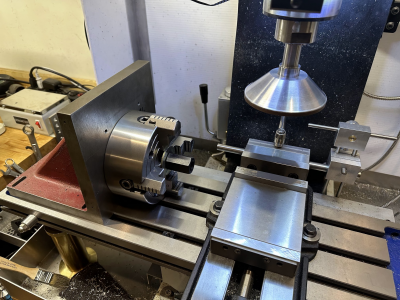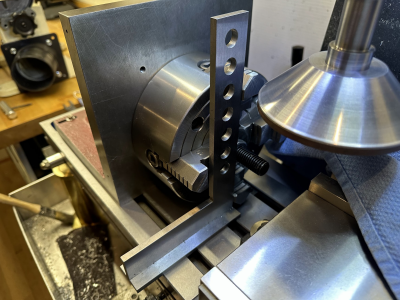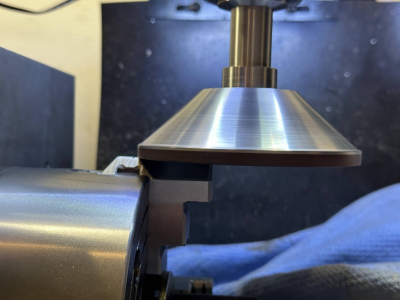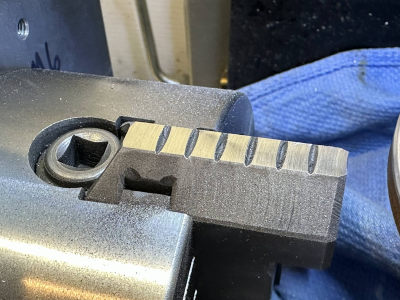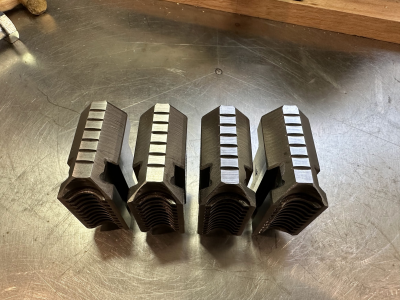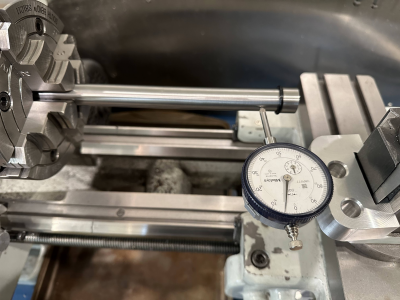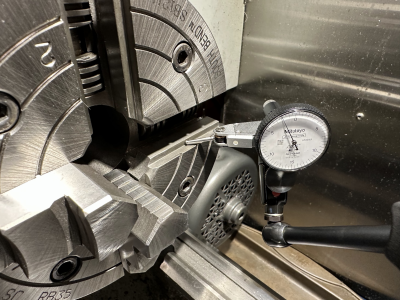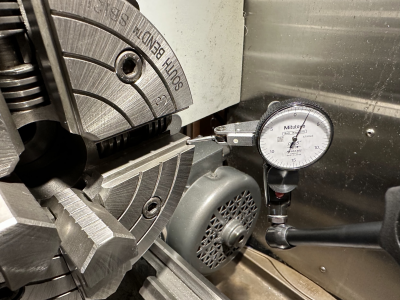- Joined
- Mar 25, 2013
- Messages
- 4,617
Preload would be more important for a scroll chuck since all the jaw faces have to be ground together. It is important here to extent that the jaw could tilt a little under load. I am not sure how to achieve preload. I could potentially put a piece of wire in the small notch near the front of the jaw and put tension on it with a weight? As I said earlier, these jaws don't have much slop in the rabbet.If you have a tool post grinder you could preload the jaws in the chuck and regrind them on the lathe. If you don't have the TPG you could possibly rig holder for a die grinder to do the same.
Getting them preloaded is the tricky part. You could make 3 spacers and put between the jaws so that they press against each other.
Edit: the way I'm gonna grind these, the weight of the jaw and the down force of the grinding wheel will add some preload. I think it will be sufficient to get within a couple of tenths.
I made a mandrel to hold my diamond wheel in the mill:
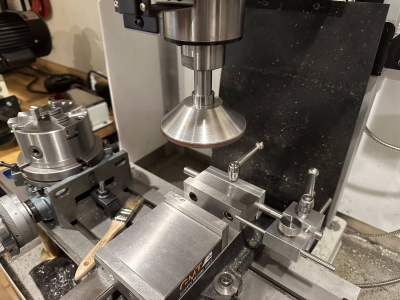
Here's how I did the rough grind:
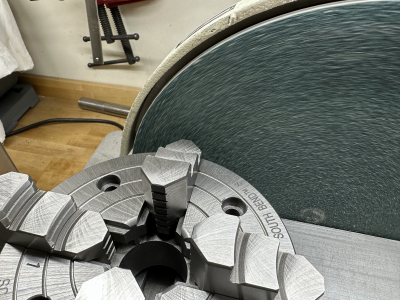
Scary I know! But after this rough work the jaws look a lot better and will tightly hold a dowel pin
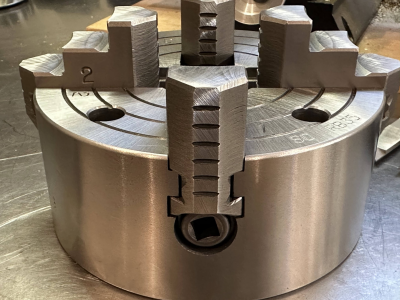
Last edited:


